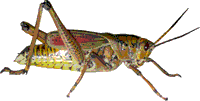Entomology Collections, General

Entomology Papers from Other Sources
Document Type
Article
Date of this Version
1988
Abstract
Insect populations infesting a small bulk of corn stored in southeastern Georgia were followed for 8 yr by monthly sampling beginning 8 mo after the corn was placed in storage. The species composition of the insect community changed as the corn deteriorated. Nine species became dominant at some stage of succession. Sitotroga cerealella (Olivier) was the dominant species when the first sample was taken. It was succeeded a month later by Oryzaephilus surinamensis (L.), which declined rapidly after 2 mo of dominance and died out during the third year. Cryptolestes ferrugineus (Stephens) was dominant at various times during the first 4 yr. Sitophilus zeamais Motschulsky was dominant during the second year and again briefly during the third. Anisopteromalus calandrae (Howard), a hymenopterous parasite of S. zeamais, was the most abundant species in one sample taken during the third year. Tribolium castaneum (Herbst) was a significant component of the insect community throughout much of the storage period and was the predominant species during much of the third through fifth years. Latheticus oryzae Waterhouse became dominant during the fifth year, after the grain had become heavily damaged and large quantities of frass, flour, and insect remains had accumulated. It remained the most abundant species for 3 yr. Cynaeus angustus (LeConte) became dominant for a brief period during the eighth year and was succeeded by Trogoderma inclusum LeConte, which was the predominant species when the last sample was taken.


Comments
Published in Ann. Entomol. Soc. Am. 81(6): 899-912 (1988).